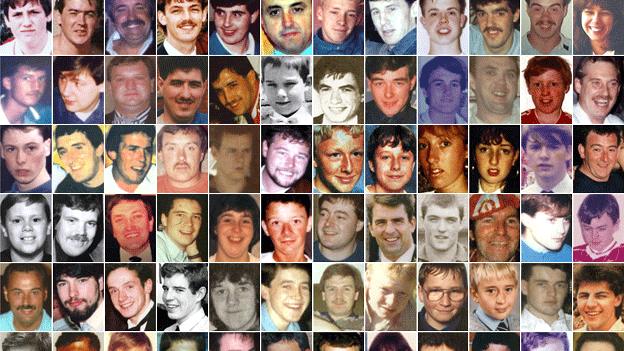Hillsborough inquests: Jury sent out over 96 deaths
- Published
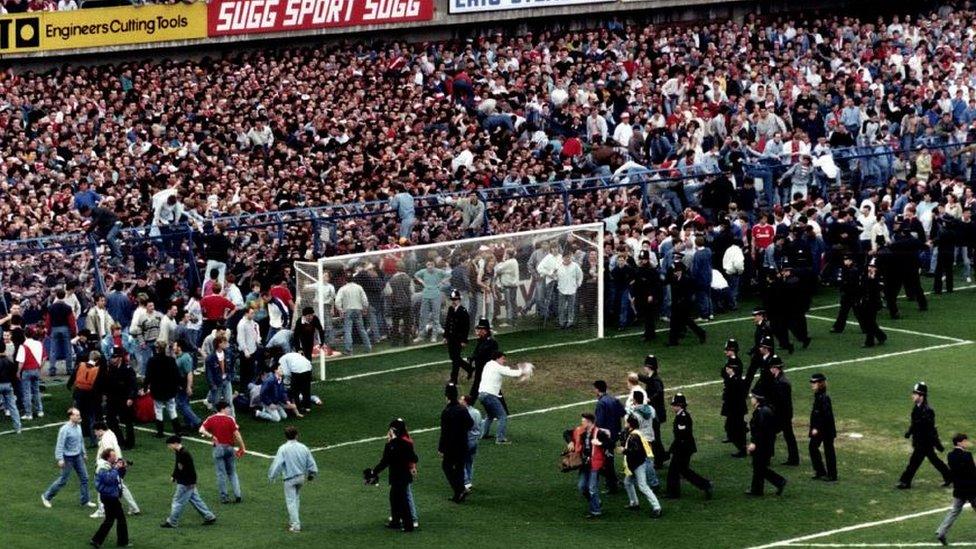
The inquests into the deaths of 96 fans have been the longest in UK legal history
The jury at the Hillsborough inquests into the deaths of 96 Liverpool fans has been sent out after hearing more than two years of evidence.
Jurors will decide if the supporters were unlawfully killed in the 1989 disaster.
The seven women and three men will also consider if fans' behaviour added to a dangerous situation outside the stadium in Sheffield.
The hearings are the longest running inquests in British legal history.
Liverpool had been due to play Nottingham Forest in the FA Cup semi-final on 15 April 1989.
But police asked for the match to be stopped six minutes in after noticing a crush on the terraces occupied by Liverpool fans.
Four hundred people needed hospital treatment after Britain's worst sports stadium disaster.
Margaret Aspinall, whose son James died in the 1989 Hillsborough disaster, said she felt a "great sense of relief" that jurors had retired to consider their verdicts
The jury will respond to a 14-section questionnaire on how the supporters died.
Four sections of it asks whether police "errors or omissions" caused or contributed to the dangerous situation at the match and the crush on the terraces.
Two other questions ask whether the police and ambulance service responses to the crushing "contributed to the loss of lives".
Question six asks if the 96 were unlawfully killed.
'Critical findings'
To answer yes to that question, jurors must be "sure" that Ch Supt David Duckenfield, who was in overall command of the police operation, was "responsible for the manslaughter by gross negligence" of the 96 who died.
Coroner Sir John Goldring has told them to put their "feelings" about the disaster "to one side" and to "assess the evidence dispassionately and without emotion".
The jury "should not make critical findings unless they are justified by the facts" but they "should not shrink from making such judgments if they are", he added.
He began his summing up on 25 January and had been speaking to the jury for 26 days in total.
Since the inquests began on 31 March 2014, it has heard from more than 500 witnesses, been shown more than 4,000 documents and watched footage from the day of the disaster.
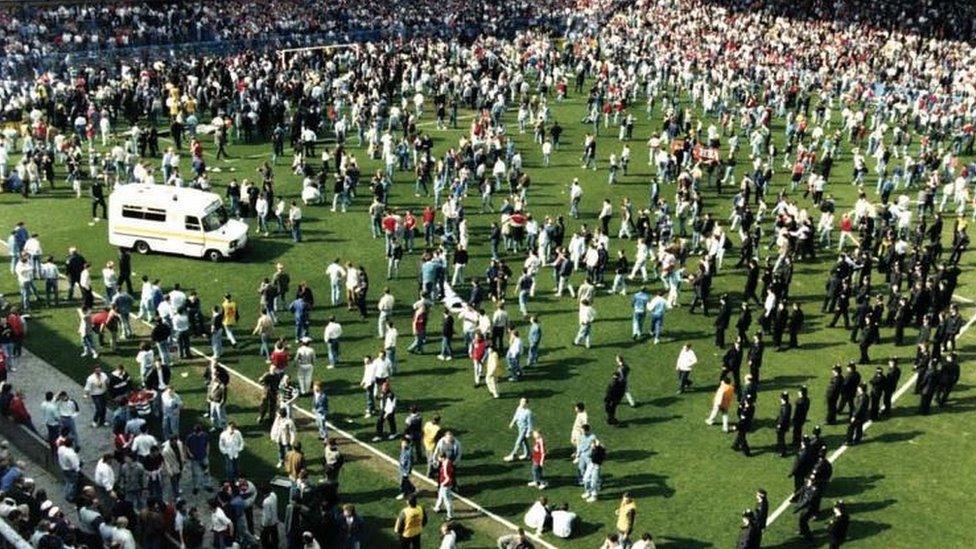
The match at Sheffield Wednesday's ground was called off at 15:06 on 15 April 1989
The jury has heard how a dangerous crush built up before the match as Liverpool fans tried to enter the stadium.
Mr Duckenfield told the inquests he gave an order to open exit gates and allow the fans inside to relieve the pressure.
Around 2,000 supporters went into the ground through exit gate C. Many of them went down a sloping tunnel that led into fenced enclosures on the Leppings Lane terraces, which already had hundreds of fans inside.

Four steps to unlawful killing conclusion
The coroner has laid out four steps jurors must consider when answering question six in the questionnaire. Only if they are sure of each, can they conclude the 96 were unlawfully killed.
Firstly, that Ch Supt David Duckenfield owed a duty of care to the 96 who died
Secondly, that he was in breach of that duty of care
Thirdly, they must be sure that Mr Duckenfield's breach of his duty of care caused the deaths
Finally, the jury must be sure that the breach which caused the deaths amounted to "gross negligence."
For the final point to be proved, the jury has to be sure the match commander's breach in his duty of care was so bad that it amounted to a criminal act or omission.
Also that a "reasonably competent and careful" match commander in his position would have foreseen a "serious and obvious risk of death" to the supporters.

Who were the 96 victims?


During his summing up, Sir John reminded the jury that Mr Duckenfield admitted several "mistakes", including that he did not think about where fans would go after opening gate C.
Sir John also referred to Mr Duckenfield's evidence that he believed many people contributed to the disaster, including the fans, with those who arrived late overwhelming police resources and the turnstiles.
The coroner has told the jury to consider his evidence "with great care".
He added: "You should make your judgments on his conduct by asking whether he could and should have acted differently in the situation he was facing.
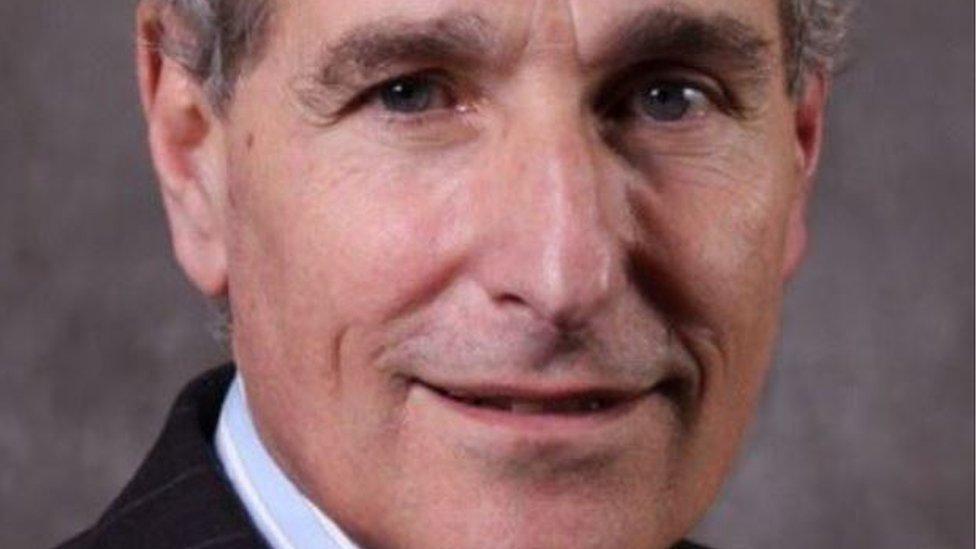
Coroner Sir John Goldring sent the jury out at 14:05 BST on Wednesday
"You should take into account the conditions he was facing when deciding what he should have done and what consequences he should have foreseen."
Sir John said there were "significant conflicts" in the evidence about what happened at the disaster.
One "highly controversial" area concerned what caused the crush among Liverpool fans before kick off, the coroner added.
He said some of the police officers who had given evidence were "critical of the behaviour of the supporters" in Leppings Lane.
But he said "many of the supporters gave evidence to a very different effect", saying the fans behaved "normally, sensibly" and "did not contribute to the dangerous situation in any significant way".
'Resolve the conflict'
Sir John said: "This is a highly controversial part of the evidence of the day, and you will have to make your own assessment of that evidence and your own decisions as to what you accept and what you reject.
"You will have to resolve the conflict. No doubt, in doing so, you will consider all the witness evidence and the evidence of the [video] footage and photographs."
The jury will respond to a 14-section questionnaire on how the supporters died
The jury will also answer questions about whether there were any defects in the stadium and if there was any "error or omission" in the licensing and local authority oversight of the ground.
There are questions about the conduct of Sheffield Wednesday Football Club, both before the disaster and on the day, and of the club's engineers, Eastwood & Partners.
Legal teams for the families claimed that "coordinated efforts were being made to manipulate the evidence and present a false narrative of the disaster", Sir John said.
But he added the police involved in the process had "denied they had done anything improper" and were following the "guidance of experienced lawyers".
The coroner told the jury: "It is entirely a matter for you what view you take about the way in which statements were gathered and then amended. You will take your own view about the motivations of those involved."
- Published6 April 2016
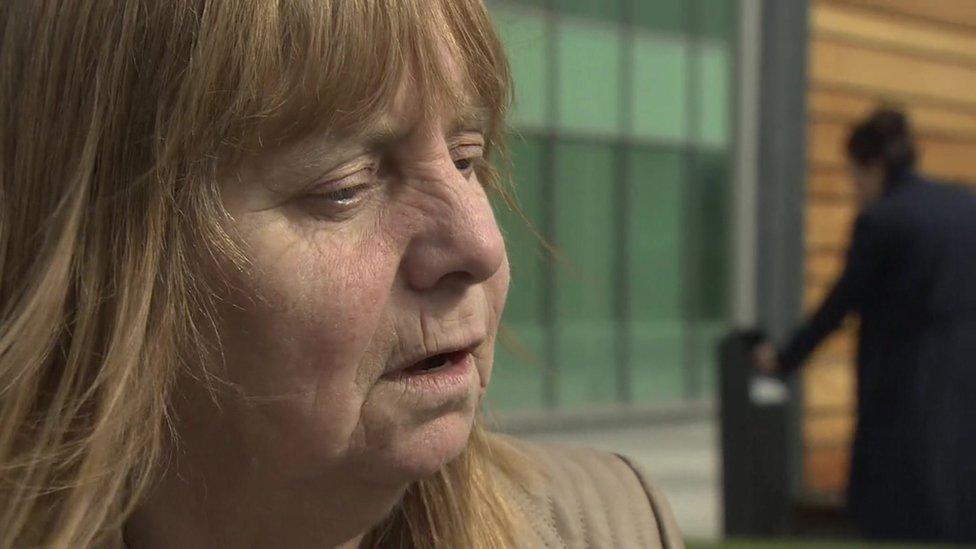
- Published26 April 2016
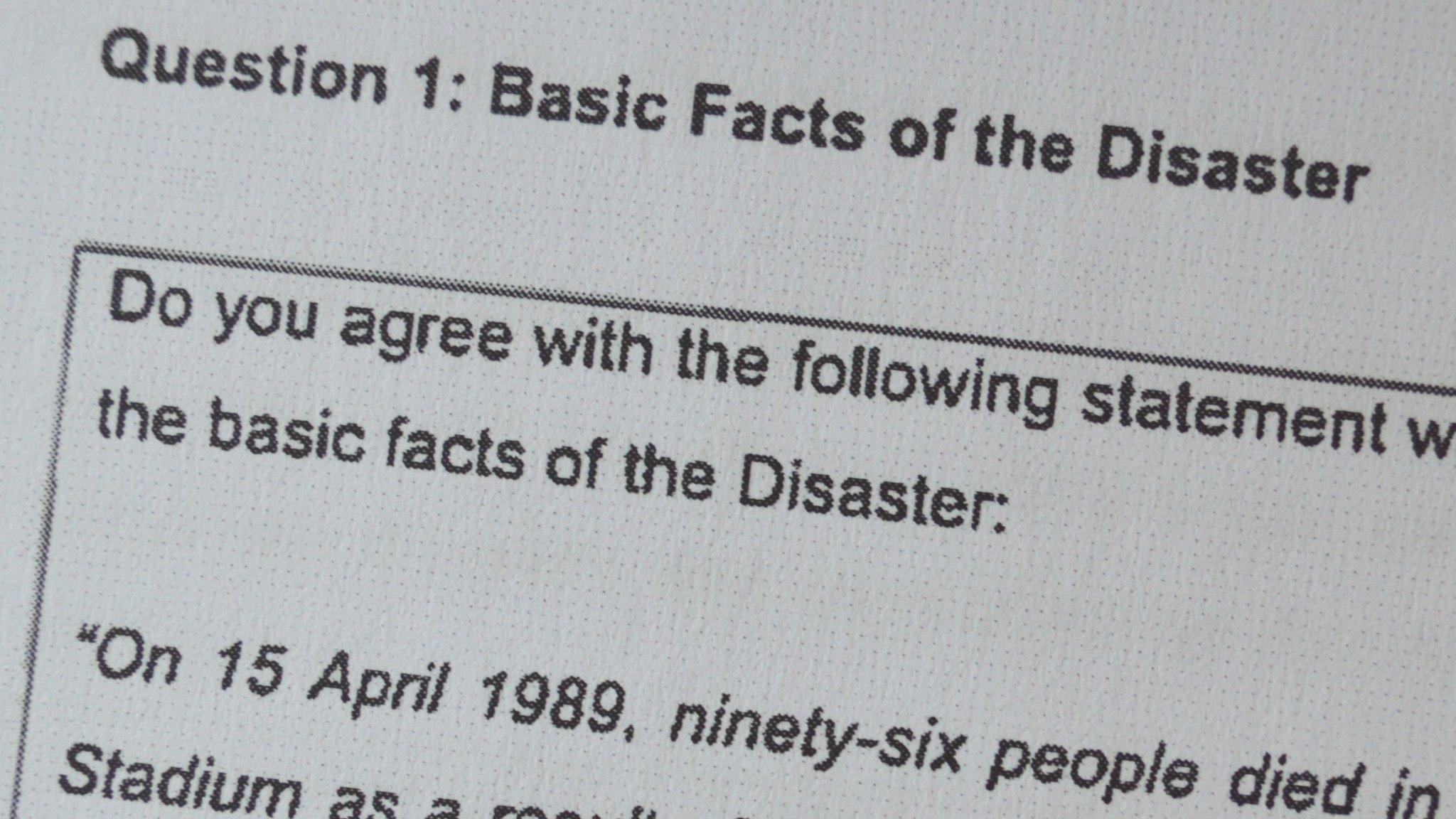
- Published25 January 2016

- Published26 April 2016
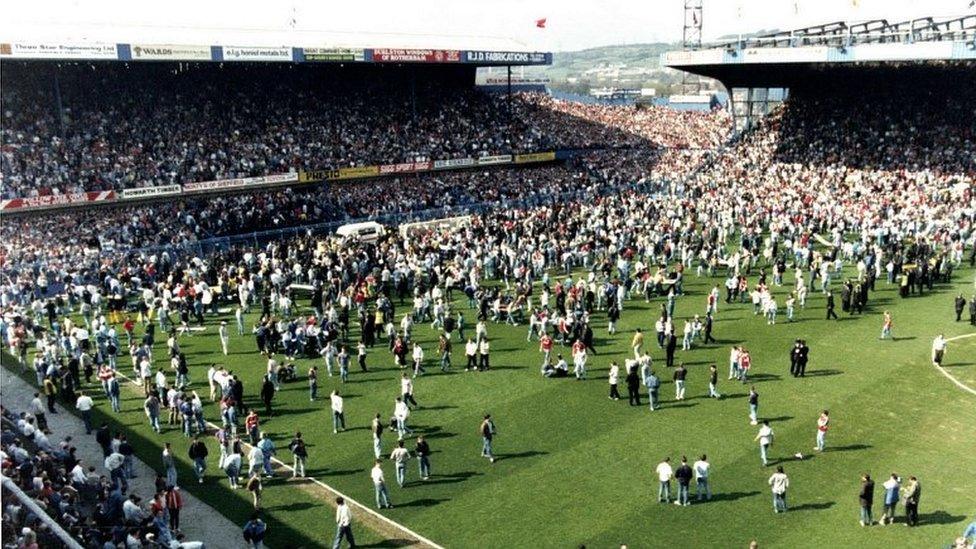
- Published26 April 2016
